All that’s left of the Yoshino Shinto Shrine are a stele and the ruined bases of three stone lanterns. In place now is an arts village promoting Hakka and Aboriginal culture, a wet market and the Qingfeng City God Temple (慶豐城隍廟), which was established in 2005.
The overlay of cultures underscores the tempestuous history of this part of Jian Township (吉安) in Hualien County, which saw the removal of the original Amis inhabitants after the Cikasuan Incident of 1908 and the establishment of Taiwan’s first government-sponsored Japanese immigrant village of Yoshino in 1910. The Chinese Nationalist Party (KMT) destroyed the shrine in its bid to rid Taiwan of Japanese influence, but they preserved the large stele commemorating the founding of Yoshino, which sits quietly under a colossal camphor tree estimated to be 200 years old.
Located just a 15-minute drive from Hualien Railway Station, these ruins are a good place to start exploring this chapter of Taiwanese history. On the surface, Jian is just another rural East coast township with drab streets criss-crossing lush farmland, but one can spot crumbling Japanese-style houses here and there as well as the popular Buddhist Yoshino Shrine (吉安慶修院), which was spared destruction due to the KMT’s affinity to the religion.
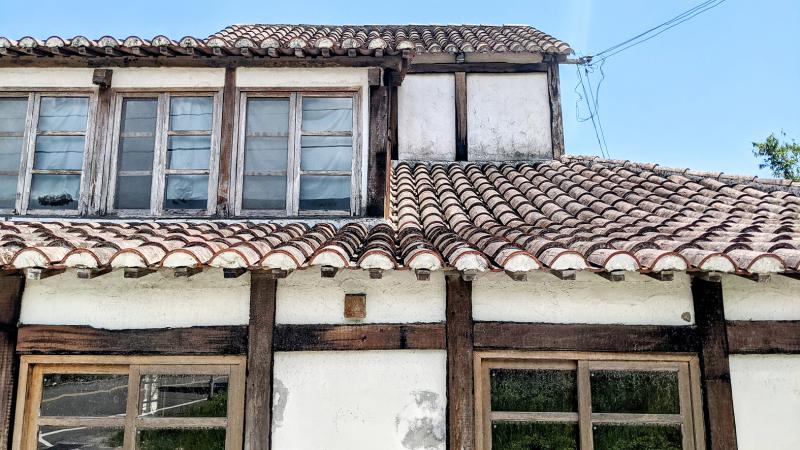
Photo: Han Cheung, Taipei Times
Encouraged by the success of Yoshino, two other immigrant villages were established to the south: Toyota in 1913 and Hayashida in 1914. Both are now in mostly Hakka areas and are easily accessible by train, and I spent a few weekends exploring the remnants of colonialism that still dot the sleepy landscape a century later. Note that most of the sites are not very well maintained, and will definitely appeal more to those interested in history and culture rather than selfie-seekers.
SLOW COUNTRY
The area’s history of conflict against outsiders dates back to the 1850s, when the first Han Taiwanese settlers arrived in Hualien. The local Cikasuan Amis aborigines sided with the Qing Dynasty during the Takobowan Incident of 1878 against the Sakizaya and Kavalan peoples, after which they became the dominant regional power.
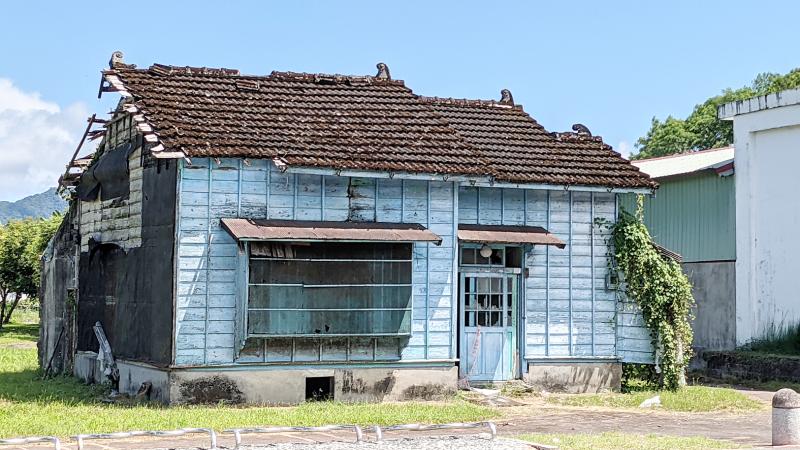
Photo: Han Cheung, Taipei Times
The Japanese employed the Cikasuan Amis to guard the defense lines against the hostile Truku people in the mountains. Like the Qing, they often exploited historical animosities between Aboriginal groups to better control them. However, they did not treat the Cikasuan Amis well and often underpaid them, leading to an uprising after which they were forcefully relocated.
This incident is marked by a towering monument by the Cikasuan River, erected by the Jian Township office in 2012. With the Amis gone, the Japanese recruited immigrants from Shikoku island to farm the land, and by 1919, there were over 300 households living in Yoshino, which was a self-contained settlement with schools, a hospital, and facilities for both Shinto and Buddhist followers.
I was roughly aware of this history when I decided on a weekend trip to Fenglin Township (鳳林), where Hayashida was located. But I was mostly drawn to the town due to its being one of four locales in Taiwan certified by Italy-based Cittaslow International, and the astonishing views of the valley we could see from our guesthouse halfway up the mountains.

Photo: Han Cheung, Taipei Times
Snail sculptures, paintings and motifs are seen all over town to promote its slow living, slow eating ethos. Yet everything seems a bit faded and neglected — the COVID-19 pandemic definitely played a part. The population is aging, evidenced from the abundance of elderly facilities in the town, a problem common with most rural communities. Still, there’s enough to keep the visitor busy (at a leisurely pace) for a day or two and it’s also a popular base to explore the region.
Remnants from the Japanese days include an intact police station, a dilapidated teacher’s dormitory and the ruins of a similarly-demolished Shinto shrine. But what stands out are the numerous tobacco barns scattered throughout the fields. The Japanese designated the area for tobacco growing, and the distinct two-story structures were used to cure the leaves.
Unfortunately, most of these barns are in falling apart, unless they’ve been converted for other purposes such as guesthouses. The saddest fate is that of the Hsu Chia-hsing Tobacco Barn (徐家興菸樓), which was given a tasteless European-style makeover in the 1990s and is now completely gutted and home to a family of dogs. The mother is quite protective, so be careful when you approach. Although most of the barns are closed to the public, I made a game out of spotting them while cycling through the picturesque green fields. I counted eight in about two hours.
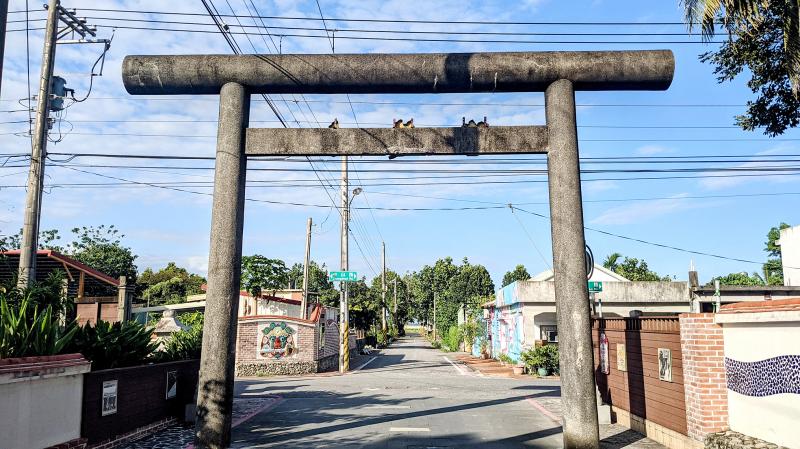
Photo: Han Cheung, Taipei Times
HAKKA AND JAPANESE
The modern townships that the three immigrant villages are located in are predominantly Hakka. According to the Hakka Cultural Museum in Fenglin, the Japanese recruited them from the west coast in several waves to help work the land since there were not enough Japanese immigrants.
Hakka culture is very pronounced In Fenglin, where we enjoy a delicious meal at the fixed-menu restaurant Si Dai Wu Nong (四代務農, “four generations of farmers”). It can be found at 1, Dajhong Road, Fenglin Township, Hualien County (花蓮縣鳳林鎮大忠路1號), tel: 0921-750866.
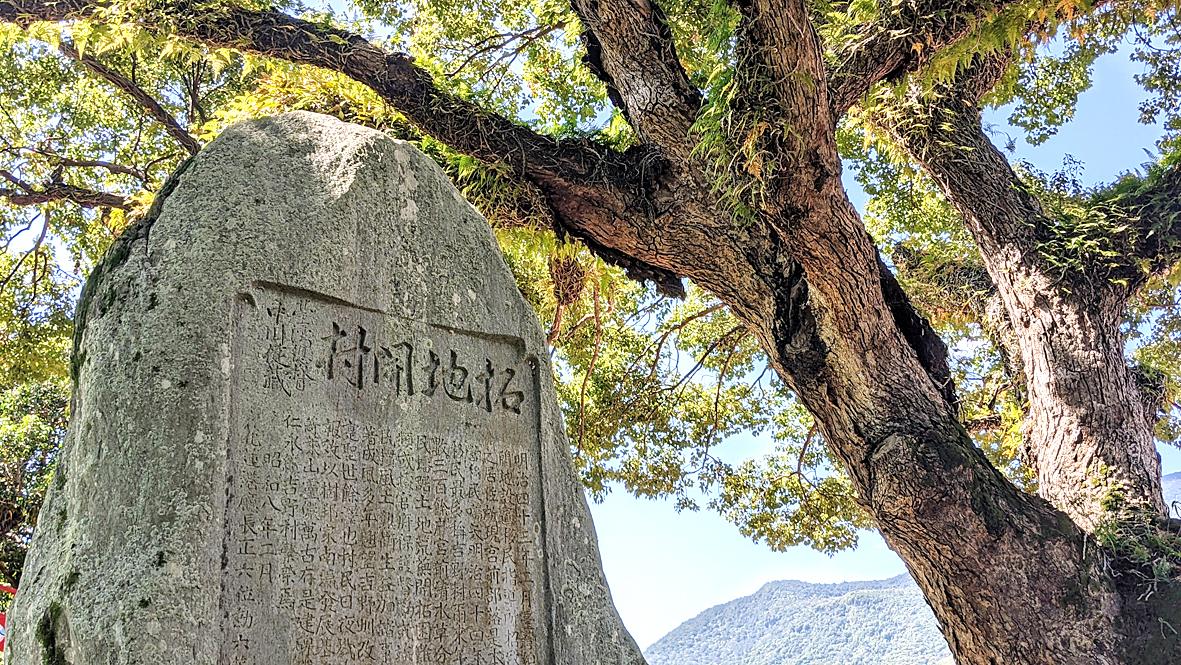
Photo: Han Cheung, Taipei Times
The Fenglin Hakka museum (鳳林客家文物館) is a bit run down but very informative (information in English and Chinese) about Hakka history on the east coast, and is worth a peek if you have time. The ubiquitous snails remind visitors to take things at a leisurely pace, and soak in the atmosphere of this sleepy town that’s not exactly pretty but has a charming atmosphere of days gone by.
If you think Fenglin is slow, however, try visiting Fengtian (豐田), about 13km to the north. Come here on a weekday and the streets are mostly deserted, with more activity going on in the colorful murals depicting rural and Hakka life that can be seen throughout town.
The remnants of Toyota Village (same Chinese characters as Fengtian) are located about 15 to 20 minutes from the train station. Visitors will first see the torii gate leading to the former Shinto shrine, with a “Bilian Temple” (碧蓮寺) sign tacked onto it. It was converted into a Buddhist temple after World War II, and the erasure of colonial elements is also apparent with the Japanese writing crudely scratched off the stone lanterns at the entrance.
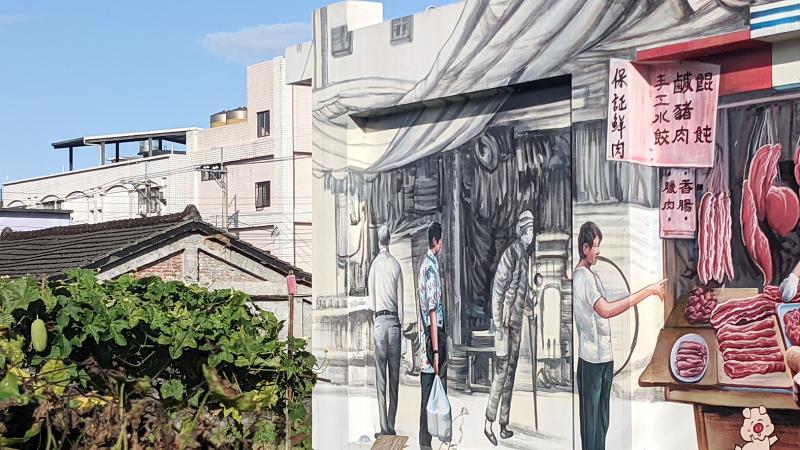
Photo: Han Cheung, Taipei Times
The KMT did not smash this structure; it was destroyed by Typhoon Winnie in 1958, and a folk temple was built in its place about a decade later. The Japanese residents of these villages — many of whom were born in Taiwan — were sent back to Japan after the war, but still kept ties with their Taiwanese hometowns. Near the temple door is a list marking a 1979 donation by members of the Toyota Association (豐田會), which was made up of such people.
After the Japanese left, many Hakka moved into their houses and renovated the interior while keeping the exterior intact. The roadside murals in this part of town pay tribute to this dual heritage, alternating depictions of Hakka culture with black-and-white photos from the Japanese colonial era.
Today’s Fengli Elementary School (豐裡國小), which was established for Japanese children in 1913, contains many structures, relics and old photos of those days as well as numerous displays devoted to this history. For food, we dined at Hetianye (禾田野), an attractive cafe housed in a 80-year-old Japanese building that housed the local Taiwan Sugar plant manager after World War II. 2, lane 121, Jhongshan Road, Shoufeng Township, Hualien County (花蓮縣壽豐鄉中山路121巷2號), tel: (03) 865-3710.
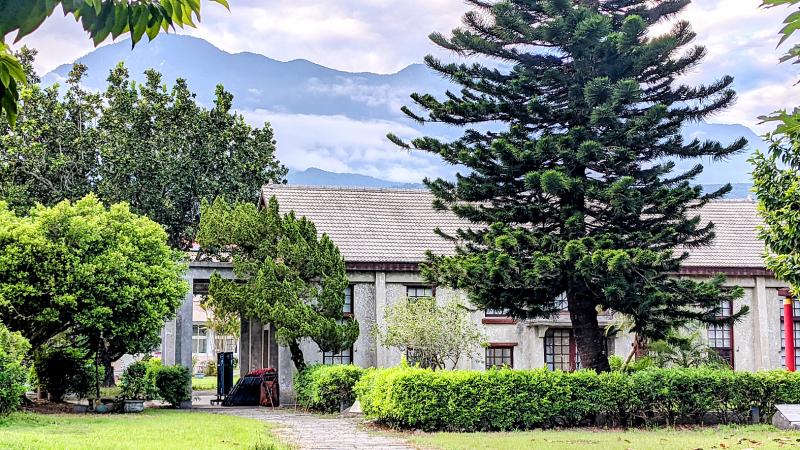
Photo: Han Cheung, Taipei Times
The rise and fall of the nation’s sugar industry is also an intriguing part of local lore, but there was no time to look into it. What I did was just a cursory exploration into one aspect of the area’s layered past, and there’s a lot more to dig into on future visits.
GETTING THERE:
Yoshino, Toyota and Hayashida are easily accessible from their respective train stations of Hualien/Jian, Fengtian and Fenglin. Bikes can be rented in Fenglin for NT$150 a day, call (03) 876-1605 to check for availability. Call 0933-537-793 for bike rentals in Jian, the shop is near the Yoshino Shrine, also NT$150 a day. Fengtian is easily explored on foot.

It is a soulful folk song, filled with feeling and history: A love-stricken young man tells God about his hopes and dreams of happiness. Generations of Uighurs, the Turkic ethnic minority in China’s Xinjiang region, have played it at parties and weddings. But today, if they download it, play it or share it online, they risk ending up in prison. Besh pede, a popular Uighur folk ballad, is among dozens of Uighur-language songs that have been deemed “problematic” by Xinjiang authorities, according to a recording of a meeting held by police and other local officials in the historic city of Kashgar in

This is the year that the demographic crisis will begin to impact people’s lives. This will create pressures on treatment and hiring of foreigners. Regardless of whatever technological breakthroughs happen, the real value will come from digesting and productively applying existing technologies in new and creative ways. INTRODUCING BASIC SERVICES BREAKDOWNS At some point soon, we will begin to witness a breakdown in basic services. Initially, it will be limited and sporadic, but the frequency and newsworthiness of the incidents will only continue to accelerate dramatically in the coming years. Here in central Taiwan, many basic services are severely understaffed, and
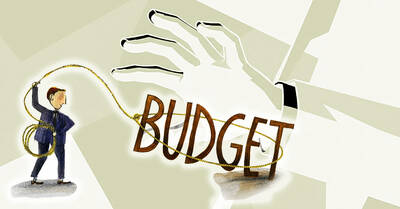
The Directorate-General of Budget, Accounting and Statistics (DGBAS) told legislators last week that because the Chinese Nationalist Party (KMT) and Taiwan People’s Party (TPP) are continuing to block next year’s budget from passing, the nation could lose 1.5 percent of its GDP growth next year. According to the DGBAS report, officials presented to the legislature, the 2026 budget proposal includes NT$299.2 billion in funding for new projects and funding increases for various government functions. This funding only becomes available when the legislature approves it. The DGBAS estimates that every NT$10 billion in government money not spent shaves 0.05 percent off

The People’s Republic of China (PRC) was out in force in the Taiwan Strait this week, threatening Taiwan with live-fire exercises, aircraft incursions and tedious claims to ownership. The reaction to the PRC’s blockade and decapitation strike exercises offer numerous lessons, if only we are willing to be taught. Reading the commentary on PRC behavior is like reading Bible interpretation across a range of Christian denominations: the text is recast to mean what the interpreter wants it to mean. Many PRC believers contended that the drills, obviously scheduled in advance, were aimed at the recent arms offer to Taiwan by the